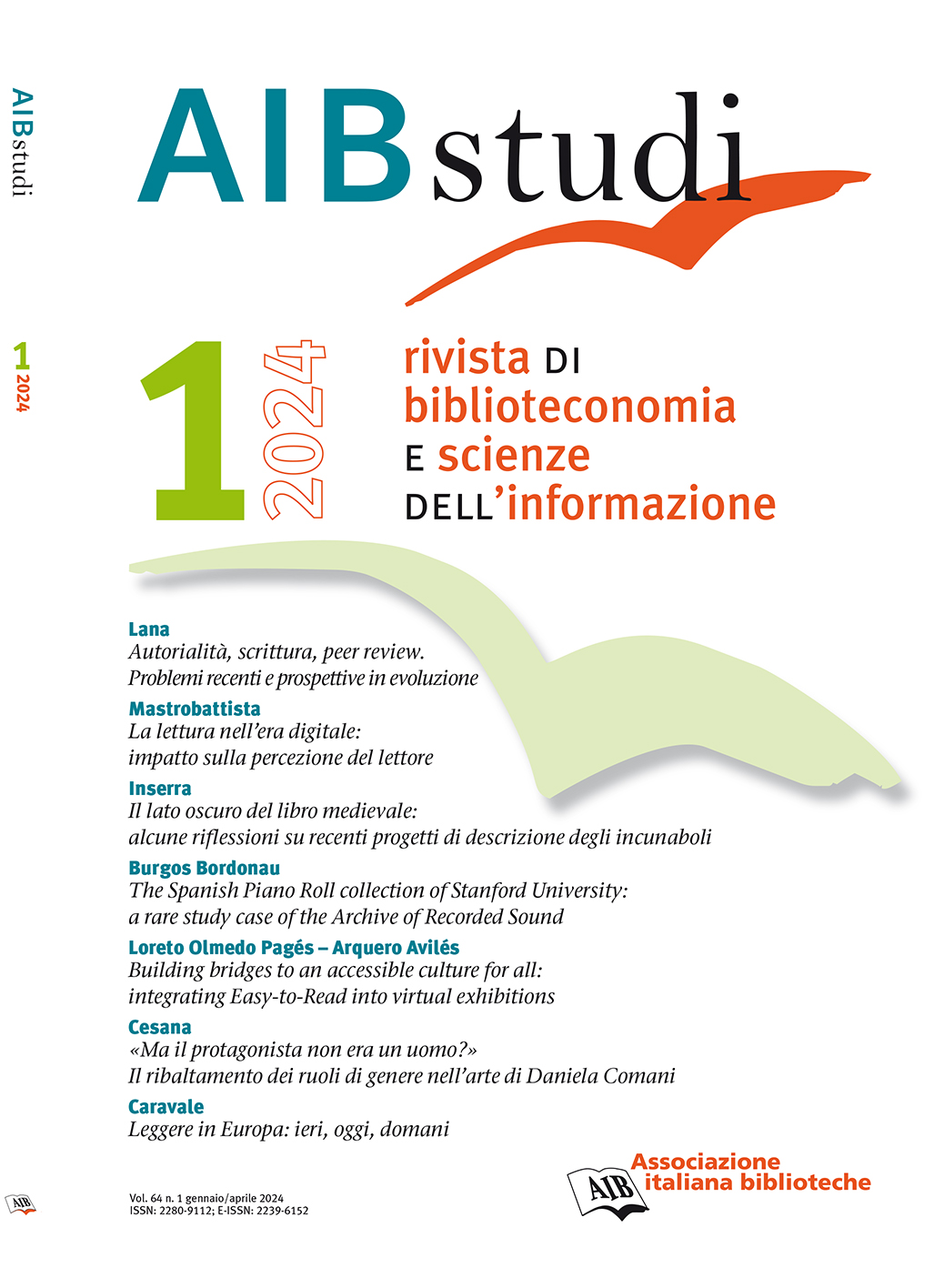Reading in the digital age: impact on reader perception
DOI:
https://doi.org/10.2426/aibstudi-13994Keywords:
digital reading, paper-based reading, reading preferences, digital literacyAbstract
The relationship between the reader and the text plays a fundamental role during the act of reading. The book transition from the print to the digital format entails significant changes in how the reader interacts with the text and ascribes meaning to the reading process. These changes, driven by new technological advancements, can profoundly impact the reading experience, eliciting a range of responses from reader acceptance to dissatisfaction with the chosen medium. Despite new electronic devices attempting to emulate the reading experience provided by paper books, the digital realm continues to shape our perception of reading, highlighting the differences in manipulating a physical text compared to one displayed on an e-reader screen. The paper puts forward several themes that have emerged from a case study on the perception of digital reading at the University of Salamanca (ES). The aim is to gain a deeper understanding of and insight into the preferences, expectations, and behaviors of contemporary readers, highlighting the gap that has emerged between analog and digital reading, primarily driven by the structural and aesthetic differences between the two reading formats and, consequently, their interaction with the reader.
Downloads
Downloads
Published
How to Cite
Issue
Section
License
Copyright (c) 2024 Ludovica Mastrobattista

This work is licensed under a Creative Commons Attribution-ShareAlike 4.0 International License.









